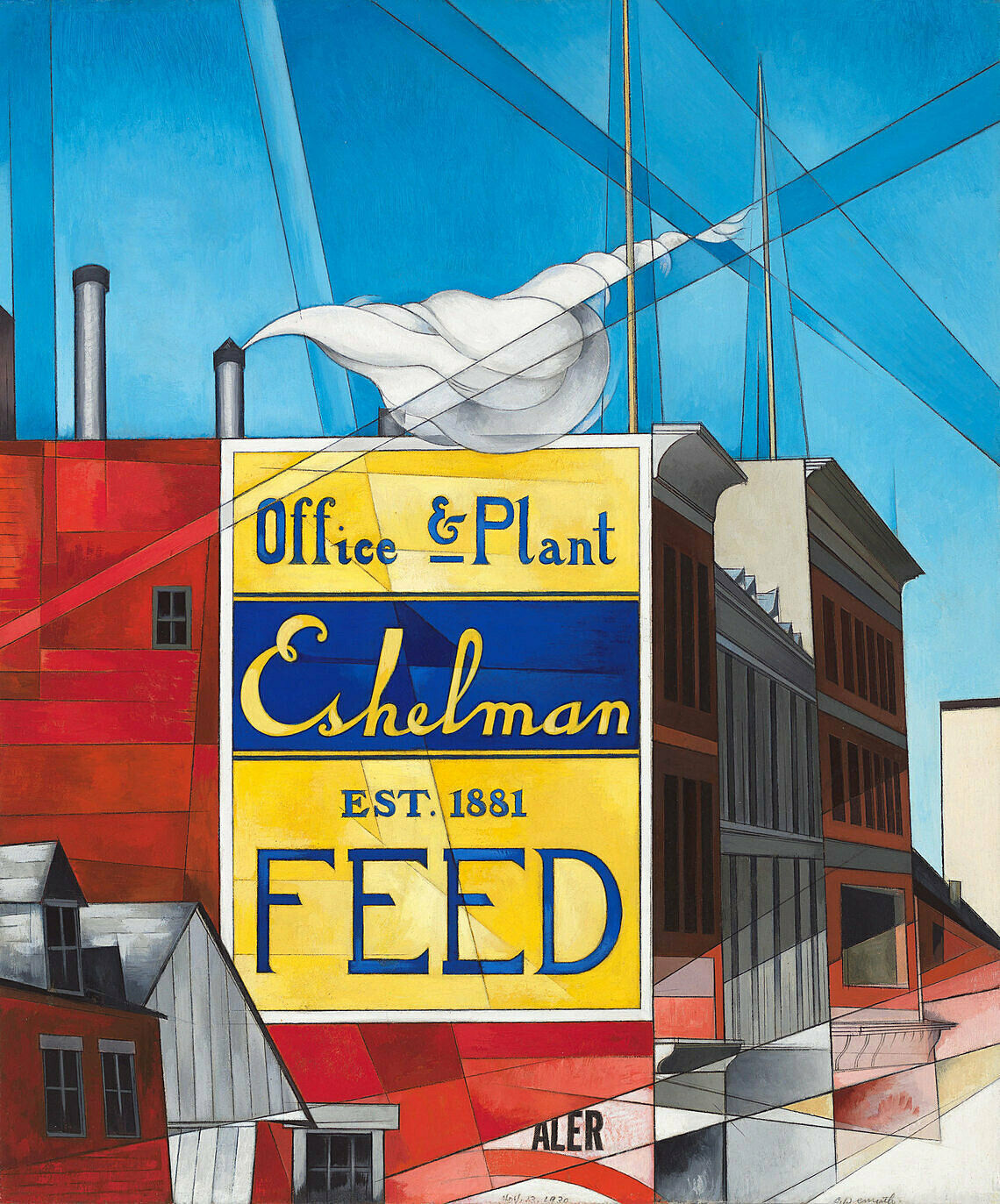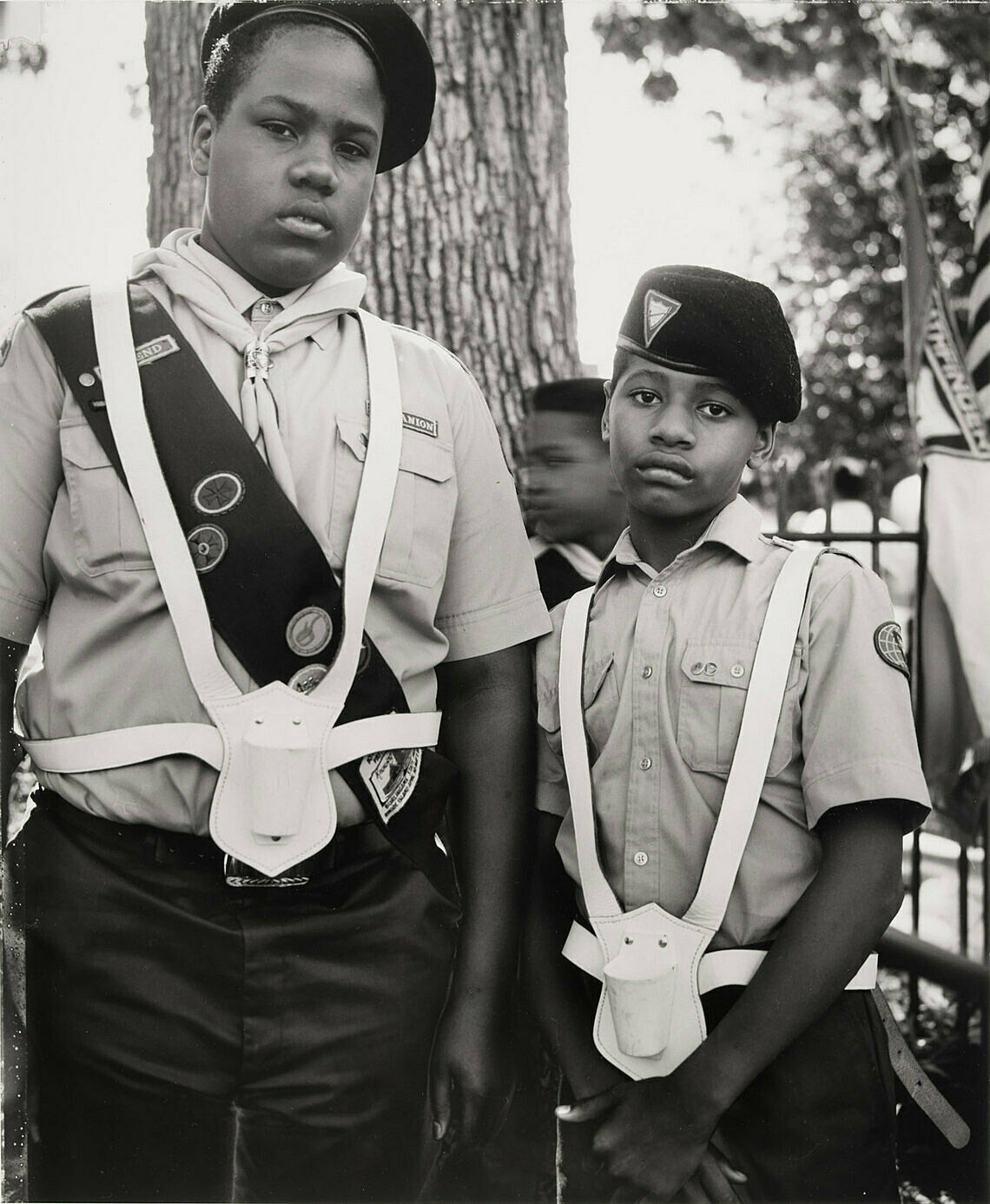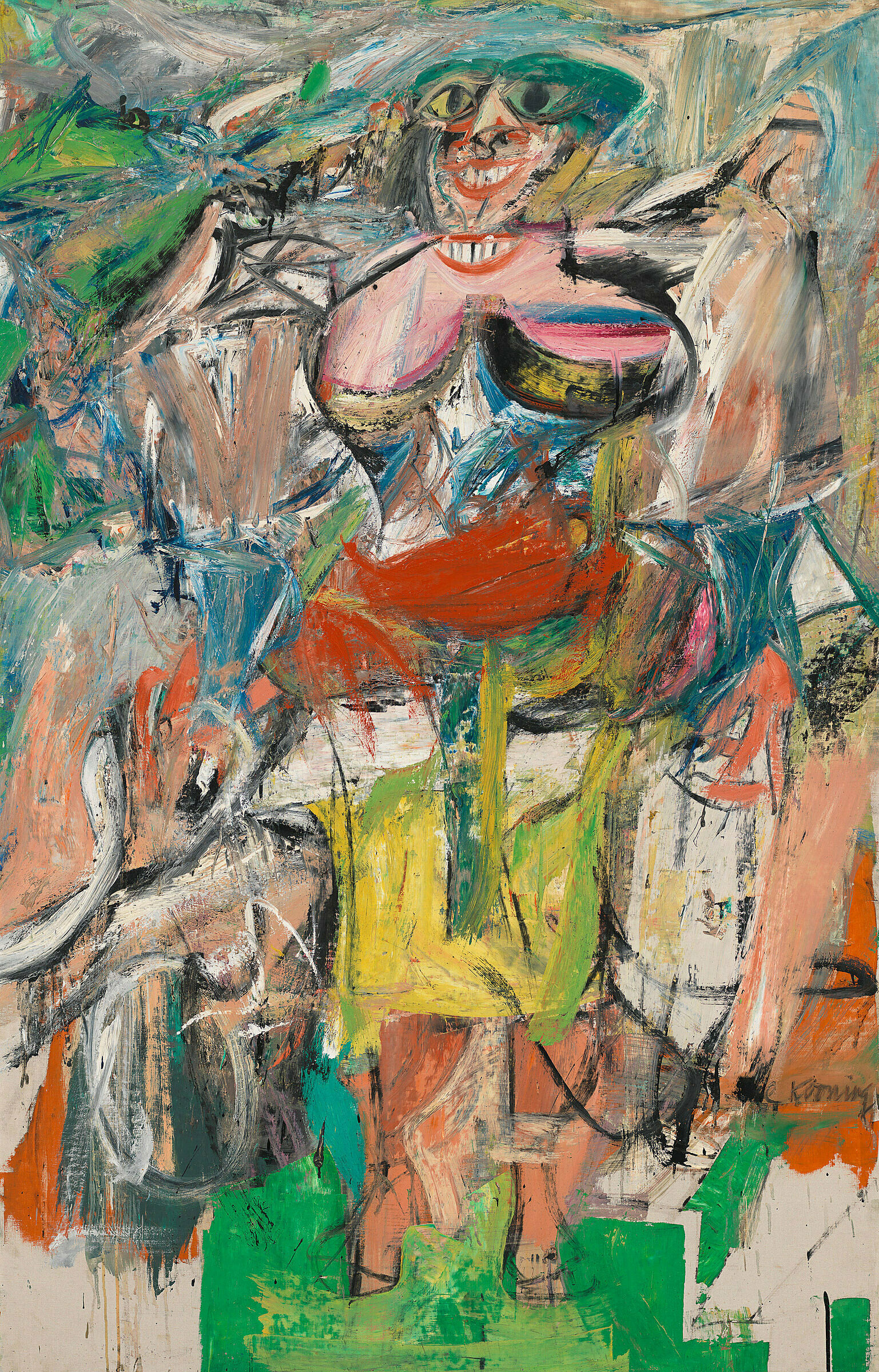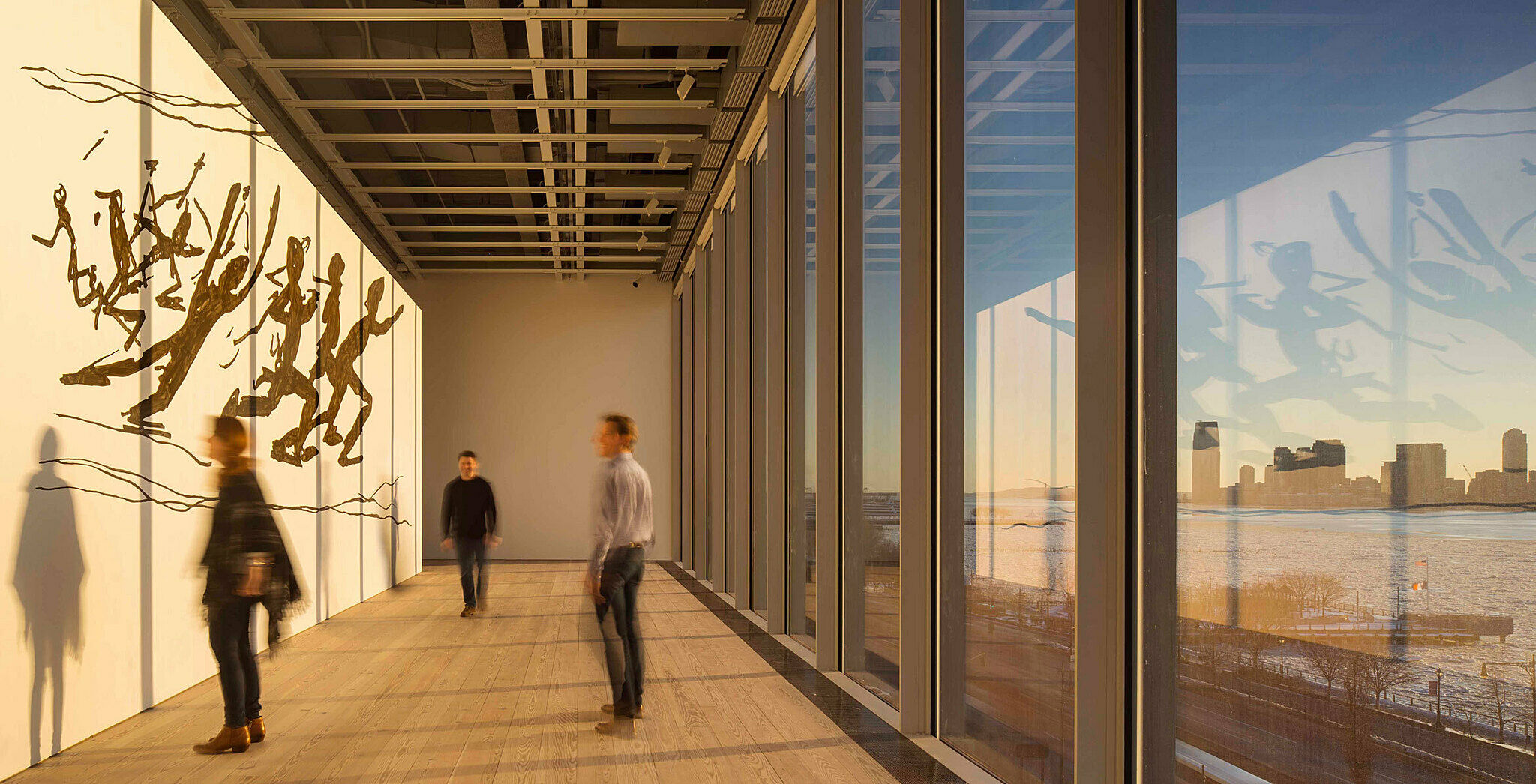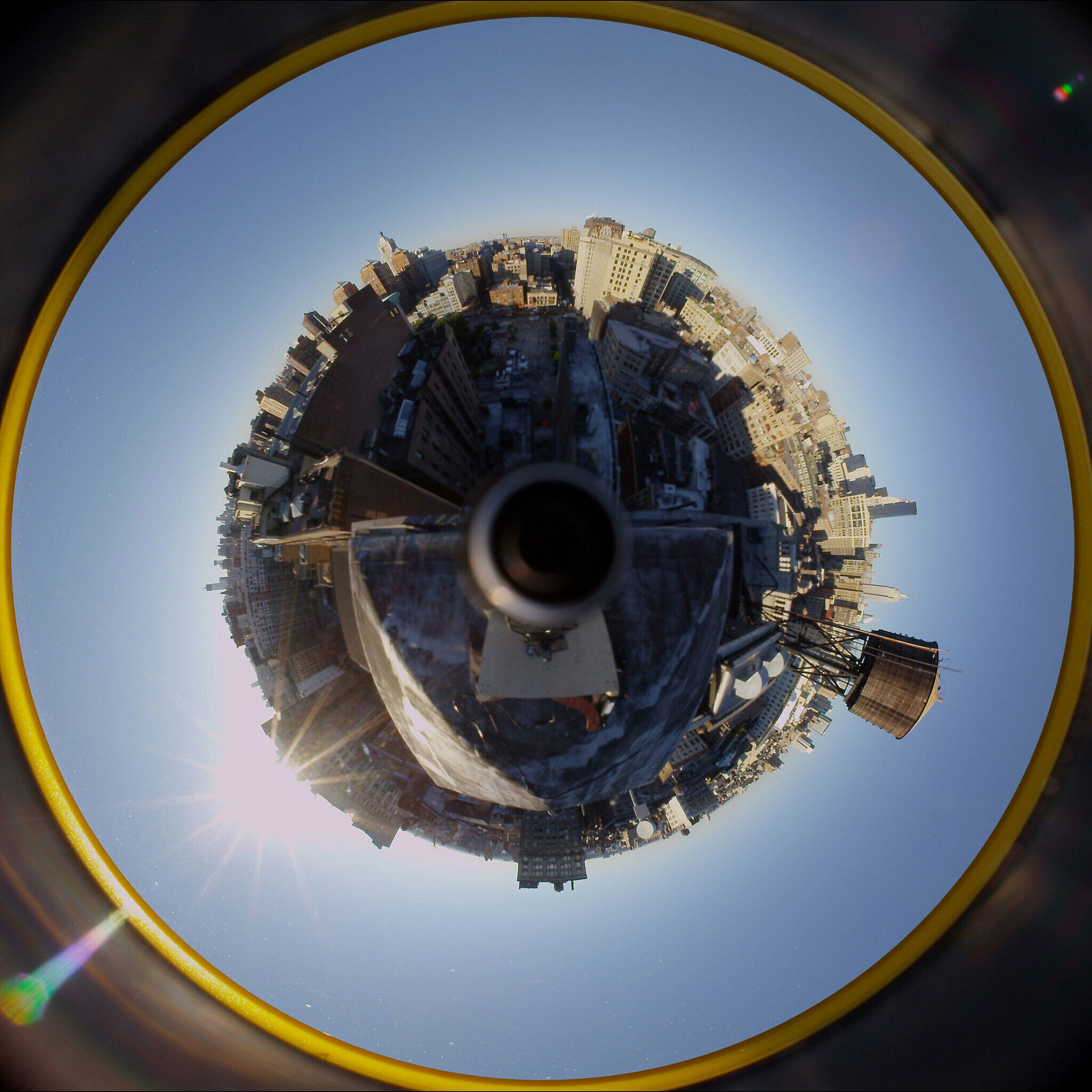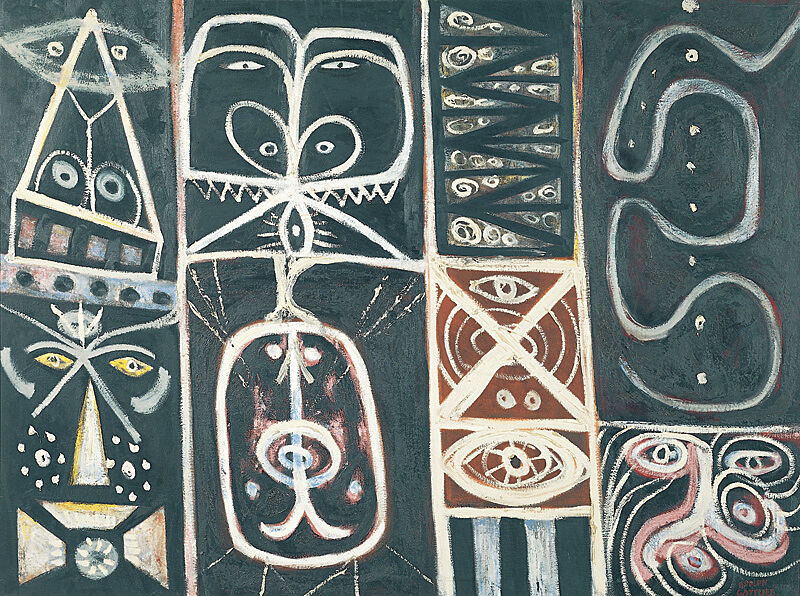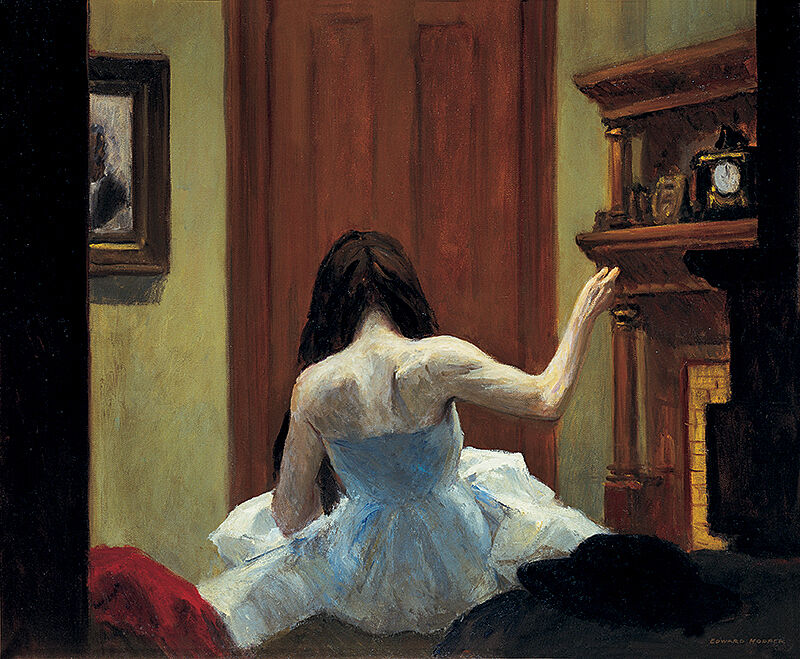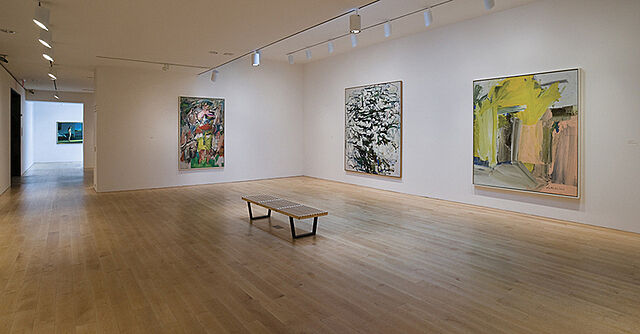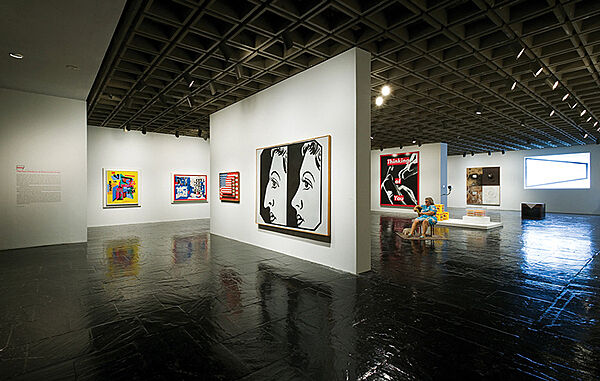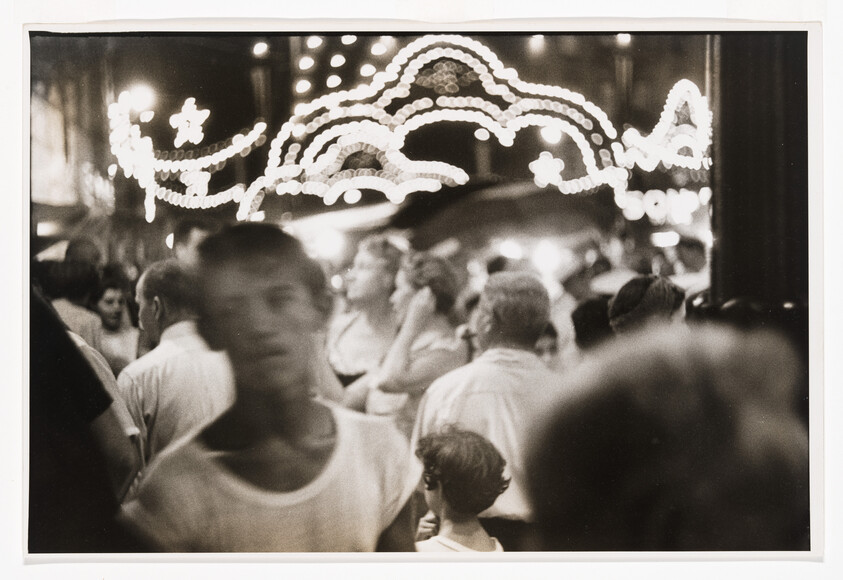Helen Levitt
1913–2009
After dropping out of high school, Helen Levitt took a job assisting in the darkroom of a commercial portrait photographer. She soon acquired her own camera, and by the late 1930s she had met and gained the support of the esteemed photographers Henri Cartier-Bresson and Walker Evans as well as the writer James Agee. In Levitt’s photographs of the late 1930s and 1940s, shot mainly in the streets of New York, two modes of artistic production often considered antithetical intersect: documentary realism, with its emphasis on vernacular subjects and social issues, and Surrealism, particularly as it engages found objects and chance meetings.
Levitt often trained her lens on children, in whose lack of inhibition she identified a freedom from the usual social strictures. Street Drawing shows a pair of girls, one of whom is creating the kind of sidewalk chalk drawing that attracted Levitt and served as the subject for dozens of her photographs. The echoing of the girls’ forms in the pair of chalk figures exemplifies Levitt’s talent for capturing lyrical moments of happenstance amid urban life, a facility also evident in New York. Here the exuberance of the young woman pictured frontally is offset by the scornful look of the pregnant woman shown in profile behind her. The two milk bottles the former hugs to her chest seem to foretell the birth of the child of the latter—a whimsically humorous, Surrealist coincidence.
Country of birth
United States
Roles
Artist, cinematographer, photographer
ULAN identifier
500059803
Names
Helen Levitt
Information from the Getty Research Institute's Union List of Artist Names ® (ULAN), made available under the ODC Attribution License. Accessed November 23, 2025.

